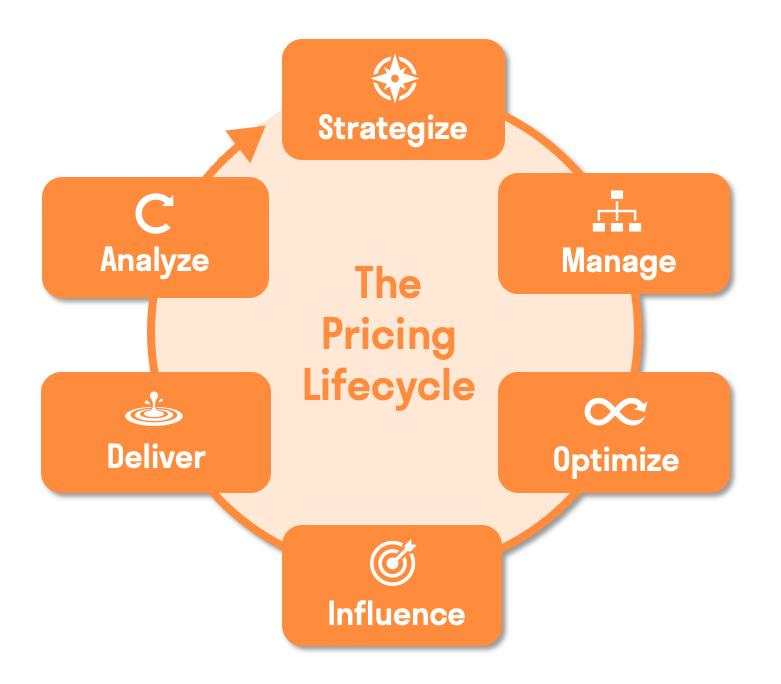On the surface, the concept of “pricing” may seem as straightforward as determining the price for a good or service. But today’s business leaders must separate a price from pricing. Price is a number, while pricing is a tightly connected process that impacts brand, financials, buying, and selling. Pricing is a process that is a critical part of every company because it touches so many departments, and it must be put at the heart of the business.
Why is Pricing So Difficult?
For many B2B companies, the pricing process is fractured across multiple CRMs, ERPs, spreadsheets, and other systems. There is no source of truth, and companies often rely on Excel spreadsheets. This becomes problematic as companies invest in digital transformation. Often, companies do not think about pricing when creating their plans, but as they begin to implement, they require pricing inputs and realize their pricing is a mess. Symptoms of fractured pricing to look for include long deal cycles, long approval times, inefficient discounting, redundant data across systems, missed upsell opportunities, never-ending CPQ implementations, and more.
The reality is that pricing cannot live in silos, be fractured across systems, or simply ignored. It’s the most important part of every deal and touches nearly every department. Only when pricing is treated as a fully connected process will companies be able to reduce manual bottlenecks and deliver the right deal at the right price to the customer.
So, you should ask yourself, how does your organization get the right deal at the right price to your customer? You’ll find that your current architecture creates more unknown and manual processing than you expected.
What is The Pricing Lifecycle?
The pricing lifecycle is a process that determines how a company gets the right deal, at the right price, to the customer at the right time. The major steps include:
- Strategize: Establish revenue growth and margin requirements and align those to meet corporate objectives or goals. This shapes your go-forward pricing strategy.
- Manage: Create a source of truth for your pricing strategy and manage the drivers of price, cost, or customer-specific pricing. This includes making price adjustments based on cost changes, regional factors, discounts, business rules, and more.
- Optimize: Determine the best pricing model based on market inputs and your pricing strategy. Then, quickly adapt prices as needed based on market changes with the help of technology.
- Influence: Empower sales to identify opportunities and incentivize purchasing or selling behavior to close deals faster with targeted guidance.
- Deliver: Enable customers, sales, and partners to close the right deal at the right price and through the right channel.
- Analyze: Measure, learn, and improve pricing strategy impact and execution through insights.
These steps are a set of interconnected processes that are constantly changing and adapting. The key to managing a successful pricing lifecycle is ensuring that data and insights from each stage build and feed into the next.

You Can’t Afford to Ignore Your Pricing Lifecycle
If any stage of the pricing lifecycle is broken off into silos and managed in disconnected systems or spreadsheets, then pricing becomes a bottleneck leading to poorly priced deals and revenue loss. B2B companies can no longer afford to ignore pricing processes. Only through efficient management of the entire pricing lifecycle will companies be able to ensure future-proof pricing and drive profitable growth.
“By centralizing pricing data and aligning it with strategic objectives, companies can gain a holistic view of their pricing landscape and identify opportunities for improvement and innovation,” Accenture Strategy Principal Director Daniel Lindner said. “Ultimately, by investing in efficient pricing processes and embracing a culture of continuous improvement, B2B companies can unlock new revenue streams, improve profitability, and build lasting customer relationships.”



